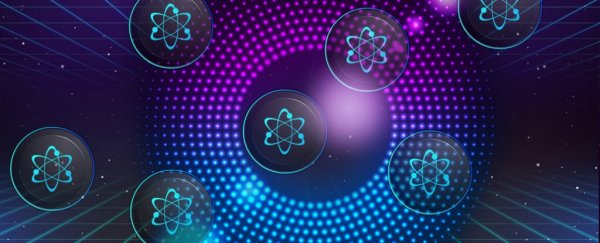For the first time, researchers have managed to capture images of individual potassium atoms distributed on an optical lattice, providing them with a unique opportunity to see how they interact with one another.
While capturing these images is a feat in itself, the technique could help researchers to better understand the conditions needed for individual atoms to come together and form exotic states of matter like superfluids and superconductors.
"Learning from this atomic model, we can understand what's really going on in these superconductors, and what one should do to make higher-temperature superconductors, approaching hopefully room temperature," team member Martin Zwierlein from MIT said in a statement.
To capture the images, the team took potassium gas, and cooled it only a few nanokelvins - just above absolute zero. To put that into perspective, 1 nanokelvin is -273 degrees Celsius (-460 degrees Fahrenheit).
At this extremely cold temperature, the potassium atoms slow to a crawl, which allowed the team to trap some of them inside a two-dimensional optical lattice - a complex series of overlapping lasers that can trap individual atoms inside different intensity waves.
"For us, these effects occur at nanokelvin because we are working with dilute atomic gases. If you have a dense piece of matter, these same effects may well happen at room temperature," Zwierlein said.
With the atoms trapped in the lattice, the team went about taking hundreds of pictures using a high-resolution microscope to see how the atoms configured themselves.
They found that in the areas of the lattice that were the least dense - such as around the edges - the potassium atoms kept their distance from one another, creating a bit of 'personal space' between each atom called a Pauli hole.
"They carve out a little space for themselves where it's very unlikely to find a second guy inside that space," Zwierlein said.
Near the centre of the lattice, where the gas is more compressed, they found that the atoms were likely to be super close together - sometimes on top of each other - and that they often oriented themselves in by a pattern of alternating magnetic orientations.
"These are beautiful, antiferromagnetic correlations, with a checkerboard pattern - up, down, up, down," Zwierlein said.
A good way to envision this is to picture how human populations differ based on density.
For example, in cities, people are completely cool with living above and below others, giving up much of their personal space. While others, in less dense regions like the countryside, have way more space separating them from their neighbours.
The team performed their experiment to gain a better understanding of superconductivity - a quantum mechanical phenomenon where there is zero resistance for electrons to travel.
Since the technology doesn't yet exist for researchers to actually see electrons on a lattice, the team used potassium gas as a stand-in to explore the Hubbard-Fermi model, which dictates how atoms will interact with each other based off of electrons.
"That's a big reason why we don't understand high-temperature superconductors, where the electrons are very strongly interacting," Zwierlein said.
"There's no classical computer in the world that can calculate what will happen at very low temperatures to interacting [electrons]. Their spatial correlations have also never been observed in situ, because no one has a microscope to look at every single electron."
With further study, a better understanding of superconductivity might one day lead to the creation of electric systems that have zero resistance, making them way more efficient than anything we have right now.
The next step is for the team to try and observe the same atoms at an even lower temperature, to evaluate how they operate and if they can form a superconductor.
The study has been published in Science.
